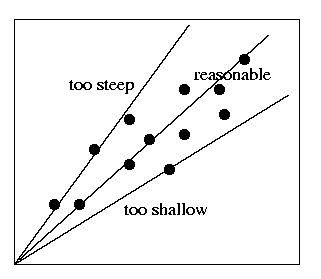Determining the Hubble constant

Determining the uncertainty in the Hubble constant
Determining the Age of the Universe:
If the universe has been expanding since its beginning
at a constant speed, the universe's age would simply be
1/Ho.
EXAMPLE:
Your Hubble constant is 75 km/sec/Mpc,
then 1/75 = 0.0133 = 1.33 x 10-2
(1.33 x 10-2) x (3.09 x 1019) = 4.12 x 1017
(4.12 x 1017) divided by (3.16 x 107) = 1.3 x 1010
This is 1.3 x 1010 years,
or 13 x 109 years,
or 13 billion years.
This age represents a very simple model for the expansion of the
universe, and is the maximum age the universe can be.
A better model would account for the deceleration caused by
gravity. Models like this predict the age of the universe to be:
t = (2/3)*(1/Ho), or 2/3 of the maximum age of the
Universe. Re-calculate the age using this relation (don't forget to take care
of the conversion of units!), and record in the
table. Remember to show all calculations.